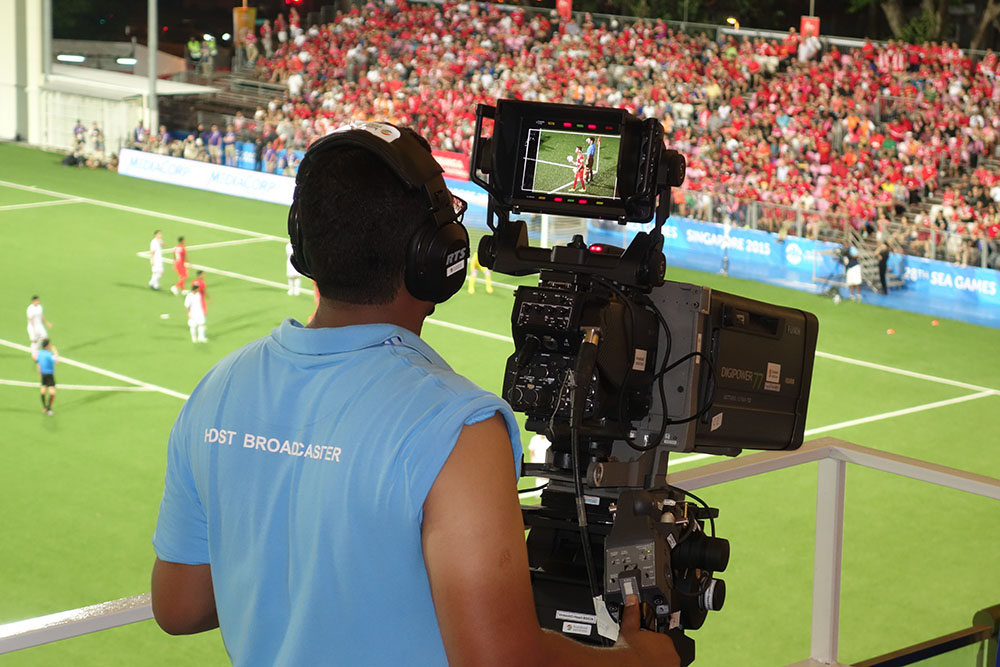
One of the most exciting aspects of sports is that broadcast brings the excitement of live sports to the homes of millions of fans. Still, not everything is rosy in the industry – there still exist several issues that need to be dealt with. Be it buffers or blackout events, the competition for seamless broadcasting everywhere is still fierce. What makes these challenges so hard to overcome? In this article, the primary concerns will be explained.
Time Lagged Streams and Supply of Bet Placements
The single most important concern for sports enthusiasts is stream lags. Lags of not more than a couple of seconds can effectively ruin the complete experience, particularly during live wagering. Say that while you are watching the “action” live scores on television, the score updates arrive, and you realize that the betting site had used its update mechanism faster than you could say the bet. This is a disruption, and it affects fans as well as betting companies that are basically looking to create an uninterrupted flow. The lag will also affect viewers who are involved in social interaction, and in this case, the discussion becomes stale.
Broadcasters continue to make progress in combating delays. However, the problem is still far from being completely solved. But if you want to feel the same excitement as watching your favorite matches, try live casino online real money. Thousands of different casino games will allow you to choose exactly what you like. And, unlike sports broadcasts, there should definitely be no delays here. Also, you can play at the casino at any time – day or night, on weekdays or weekends – whenever you want.

The Accessibility Problem: Who’s Being Left Out?
While big networks are able to cover a larger scale of events, niche audiences are most of the time deprived of having such access to broadcasts. Such a situation is rather typical in places where internet speed is not up to the mark, or there is not enough sports licensing. This is what quite often makes equal opportunities to view sports broadcasts difficult:
- Geo Limitations – Due to broadcasting rights, many matches are geo-blocked often.
- Costly Subscription – Premium sports channels are as expensive as a model.
- Low Sporting Coverage – Low popular sports or leagues tend to be less represented on the screen.
- Extensions of the Internet – There are many simple rural areas that lack accessible streaming.
These hurdles prevent numerous fans from experiencing the exceptional coverage that others consider standard. In order to provide universal access, it is necessary to develop localized broadcasting and low-cost services.
The Increasing Competition of Streaming Platforms
With the likes of Amazon and YouTube now in the sports broadcasting business, traditional TV is now facing intense rivalry. Such a larger selection would, however, be beneficial to fans of any particular league, but it has made coverage more dispersed. People are required to subscribe to a number of different leagues in order to watch different sports, and this is not something that most people wish to do. Furthermore, exclusive deals often result in content being hidden behind expensive subscriptions, and casual observers miss out on the action.
Consequently, this segmentation of the content demoralizes consumers in that they have to deal with more expenses in order to have a whole experience, which causes discontent. To remedy the issue, content distributors might explore mixed partnership offerings or a one-stop solution. In the meantime, this problem is being solved – you can subscribe to MelBet Instagram Bangladesh. There, they often publish news from all popular sports, sports memes, and much more. Also, sports betting fans will be able to find unique promo codes there that will allow them to win more!
Advertising Overload: A Growing Annoyance
Yet another ever-present point of contention is the ad ubiquity on air. While advertising sustains the industry, it is often to the detriment of the audience. Fans become frustrated when they miss critical plays because ads cut out important action. This problem is particularly acute in high-paced sports, where even short advertising interruptions feel out of place.
Certain sites have started testing overlay ads or split-screen format where the commercials are shown with live coverage of the event. These possibilities are, however, not ideal and can still be distracting to the viewers.
Lack of Innovations in Viewer Engagement
This generation of viewers is no longer only concerned with the gameplay itself. Tools like AR, multi-camera, and multi-angle single-play features are largely unreleased. The younger demographic, in particular, expects more than just watching and listening to the content. Alas, these options are not widely promoted by most broadcasters, leaving a hotspot for creativity.
In theory, there are some things that could interest and change the viewer’s experience:
- Real-Time Stats Overlays – Instant data on player performance.
- Camera Angle Adjustment – Opting for a view that is suitable for the viewer.
- AR Additions – Scoreboards and other tools that show videos and narrate live events.
- Fan-Targeted Voting – Fans can vote on particular plays or decisions or the outcome of the game.
Pursuing these features can not only enhance viewership numbers but sustain younger generations as well.

Piracy and Its Impact on Broadcasting
Online piracy continues to be a major challenge within the media, resulting in lost revenue of billions of dollars each year. In a bid to minimize costs on live airing or to skirt over geographical restrictions, fans resort to illegally streamed sources. However, these sources are mostly of low quality and come with associated risks which may expose the user to unsafe interactions.
To mitigate this situation, even more effective anti-piracy protection, universal availability without geographical restrictions, and lower prices should be adopted. To a certain degree, creating trust with the audience through fair and open pricing may help eliminate the scourge of piracy.
Broadcasters Must Adapt to Change
The sports broadcasting industry is changing quite rapidly, but the solutions to its problems are often slow. Broadcasters can leverage technology, improve accessibility, and enhance viewer experience and satisfaction as opportunities to turn these challenges around for positive growth. The sports broadcasting of tomorrow will focus on the speed of streams, their convenience, and user engagement – and all of this will constantly evolve.